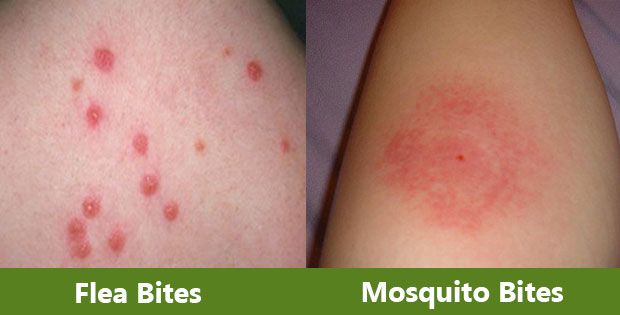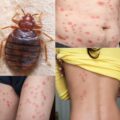Fleas are a type of wingless parasite found worldwide. They feed off the blood of humans and animals such as dogs and cats. Since fleas use a wide range of hosts, diseases can be transferred from one host to another. Fleas are known to transmit tapeworm larvae and, uncommonly, the disease murine typhus. They are most notorious for transmitting bubonic plague from wild rodents to humans in certain parts of the world.
The three main species of flea that infest humans are:
- cat flea (Ctenocephalides felis)
- dog flea (Ctenocephalides canis)
- human flea (Pulex irritans).
A flea bite is intensely itchy and secondary infections caused by scratching are common.
Symptoms of a flea bite
The bite of a flea has certain features, including:
- It is extremely itchy.
- A red, swollen weal develops within half an hour of the bite.
- After a day or so, the weal (lump) may develop into a blister or small wound.
- The legs and feet are often targeted.
- Secondary infections caused by scratching are common.
- Some people may become hypersensitive (very sensitive) to bites.
Physical characteristics of the flea
A flea:
- is wingless, oval shaped and around 2 to 8mm long
- is light to deep brown in color
- has a disproportionately small head
- has six legs
- has large hind legs that enable them to jump long distances.
Blood feeding by fleas
Adult fleas can survive for some months without feeding. The flea uses its saw-like mandibles (jaws) to cut through skin, usually on accessible parts of the body such as the legs or feet. Flea saliva contains anticoagulants to encourage the blood to keep flowing.
Female fleas are prompted to lay their eggs after feeding. The eggs are light colored and oval shaped. The larvae cocoon themselves within weeks of hatching. Vibration, such as footsteps, prompts adult fleas to emerge from their cocoons. This is why you may be bitten after entering a house that has been unoccupied for some time.
What Do Flea Bites Look Like On Humans?
Flea bites are usually itchy, small papules arranged in a non-follicular pattern in groups of three, also known as the breakfast, lunch and dinner configuration. They usually occur around the feet and lower legs, as fleas tend to live in the carpets and floorboards. Flea bites can induce papular urticaria which is diagnostically made by clinical examination. Papular urticaria is a hypersensitivity disorder in which insect bites, usually those of fleas but often of mosquitoes and bedbugs, lead to recurrent and sometimes chronic itchy papules on exposed areas of skin, with large welts that are painful and hot to touch.
Flea bites are easily infected as scratching can introduce bacteria into the open sores. Infected flea bites become painful, red, pussy and swollen. Flea allergy may cause respiratory symptoms in humans, especially in patients allergic to cats however, anaphylaxis has not yet been reported.
How to Get Rid of Flea Bites in Humans
Suggestions to treat flea bites include:
- Resist the urge to scratch.
- Wash the bites with antiseptic soap to reduce the risk of infection.
- Apply an icepack frequently to help relieve swelling.
- Use calamine lotion, anaesthetic creams or similar to treat the itching.
- See your pharmacist for advice on appropriate antihistamine medications to reduce the swelling.
- Seek treatment for possible tapeworm infection, since fleas can transmit this parasite through their bite.
- See your doctor if the symptoms worsen or if a secondary infection develops (indicated by discharge of pus from wounds).
Treating your house for fleas
Your local council can offer information and advice on dealing with a flea infestation. Some general suggestions on eliminating fleas yourself include:
- Clean animal bedding and the general surrounds thoroughly.
- Vacuum the carpets. Throw away the vacuum cleaner bag, since it will contain fleas and eggs, or use a surface spray into the bag.
- Use an appropriate spray or ‘flea bomb’ in your house, taking care to follow the label directions carefully.
- Treat outdoor areas commonly used by your pet, such as kennels, with appropriate insecticides, wearing gloves and long-sleeved protective clothing as instructed on the label.
- Repeat the procedure once or twice, since flea eggs can survive for some weeks.
- Maintain hygiene practices (regular vacuuming, keeping pets free of fleas and so on) to prevent another infestation.
- A persistent infestation may need to be treated by a qualified pest control







